#30. Casting Light On The Arctic
The Arctic is the northernmost region on Earth. Tough, freezing conditions govern the climate all year round (yes, during the summer too!). Wondering how cold it can get over there? Well, during the winter the temperature can fall down to -90 degrees… in fact, the people who live there can see entire months without catching even the slightest glimpse of a ray of sun. If you’re a fan of the Caribbean and other tropical regions, the Arctic can be crossed out from your next vacation list.
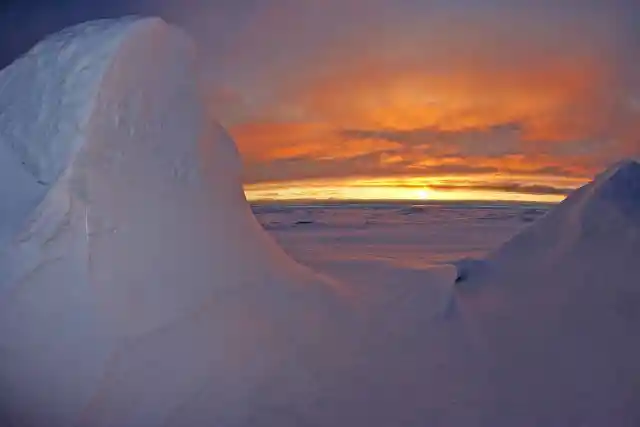

Because of the winds, combined with the large amounts of snow, one can be under the impression of observing a never-ending snowstorm. However, these characteristics also add an undeniable mysterious and epic mystique to this region, attracting daring explorers, photographers, nature lovers, and some tourists from all over the world in search for breathtaking landscapes to its icy shores. Keep sliding through to learn about the amazing history and species of this land!
#29. A Vast Territory
People sometimes think of the Arctic as a small, distant and cold place. Little do they know that it is actually an enormous territory. In fact, the Arctic includes parts of Finland, Greenland, Canada, Russia, Norway, Sweden, Alaska and Iceland (in addition to the Arctic sea, and other adjoining waters). Wondering how much territory that is? About 5 and a half million square miles. Impressive, huh? How big is it when comparing it to the Antarctic, one might ask…
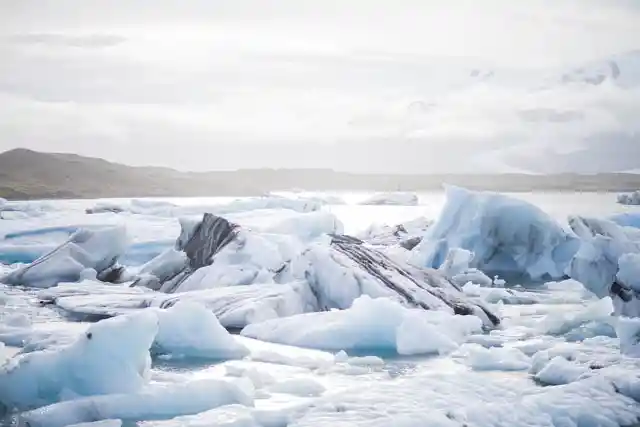
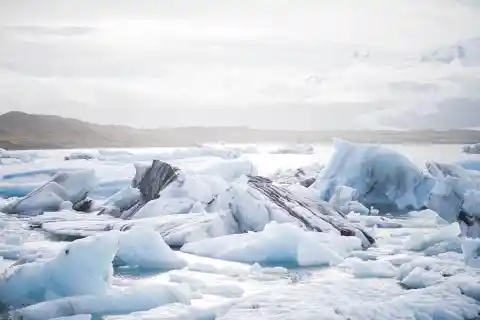
Well, if the subject of discussion is the amount of territory, they’re practically tied. But the Antarctic is considered a continent, whereas the Arctic is not. Why, exactly? Aren’t they two chilly, almost uninhabitable places, with the only difference that one is on the southernmost area and the other one is on the northernmost area of the planet? Not exactly, the Antarctic is considered a continent because there’s landmass beneath the ice, whereas the Arctic can’t be included in the same category because it’s literally floating ice, with no land underneath it.
#28. Rough Atmosphere
The combo of extremely low temperatures, unstoppable wind and snow, in addition to winter’s months without sun naturally provide for an uncomfortable, cruel atmosphere. Living on the Arctic is a challenge for which not everyone is prepared… just imagine yourself taking a pleasant walk, when out of the blue a piercing blizzard attacks! Humans have to go totally nuts in order to want to live there, that’s what many may be thinking. Well, in fact, indigenous cultures have been here for a long, long time.
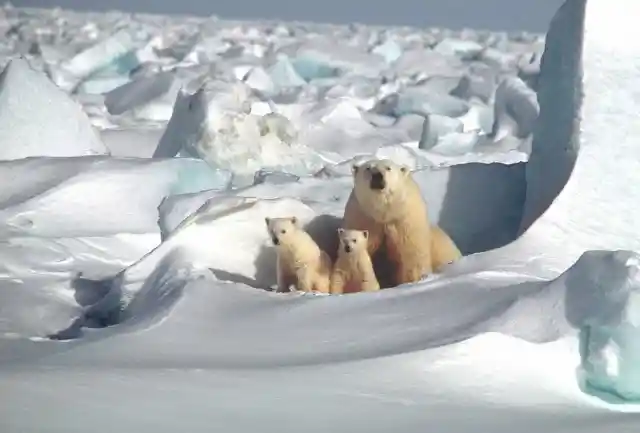
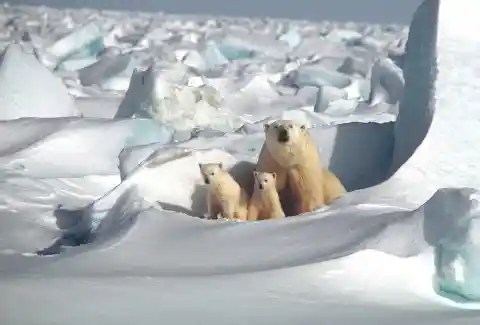
Paleo-Eskimo cultures have wandered the Arctic’s ice (not its land, remember why it’s not considered a continent!) since the year 2500 BC, approximately. One would expect that with a good pair of centuries serving as experience, the indigenous people living in this northern Polar region nowadays have already grown to be perfectly adapted to the harsh conditions, and that is exactly the case. Their diet basically consists of meat and fish, since it’s pretty hard to find vegetables in this region.
#27. Magnificent Species
Furthermore, numerous types of plants and animals have also learned to survive and have thrived in this area. Immense whales, walruses, seals and belugas inhabit the frosty waters of the Arctic. On the other hand, you might also encounter reindeer, hares, moose, polar bears, and arctic foxes and wolves, among others. Thus, the harsh conditions are partly compensated by the beautiful, unique species that constitute the Arctic’s wildlife. Just picture yourself coming across a majestic, white polar bear while taking a stroll!
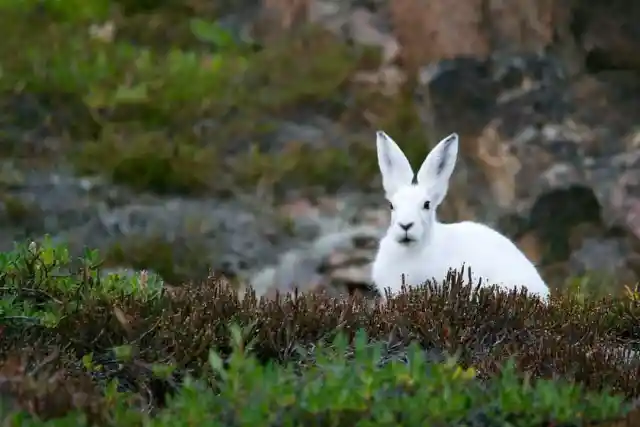
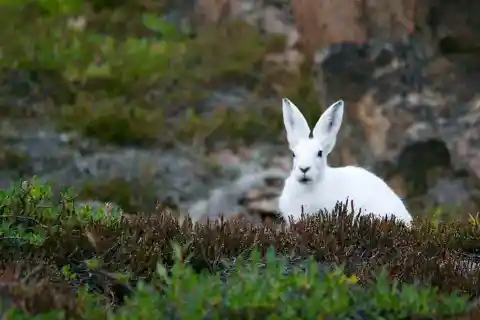
However, it’s a well-known fact that climatic change due to human contamination is putting many of these animals in peril. While the elegant arctic fox is actually declining in number because of incessant hunting, the polar bear is endangered mainly due to the thawing of ice in the region. Global warming impacts in numerous ways on the food chains of these animals. For instance, the arctic fox is also facing extra trouble because of the red fox’s appearance, which can be attributed to the decreasing ice. The red foxes usually fight for the same prey, and occasionally attacks the arctic fox directly while competing, affecting their chances of survival directly.
#26. What About The Cities?
Small indigenous communities aren’t the only humans occupying the Arctic. Approximately 4 million people live in small cities that have been built over this immense territory. 4 million may seem like quite a number, but remember that the Arctic is over 5.5 million square miles! So think about it twice or more if you’re planning to move there because you’re sick and tired of your neighbors! Life can be quite lonely in the northernmost region of the planet.


The most inhabited cities of the Arctic belong to Sweden, Norway and Russia, being Mormansk, with a population of almost 300 thousand, the top choice for the courageous families which accept the challenge of freezing, severe temperatures. In contrast with Mormansk, Utqiagvik, in Alaska, is the largest North American settlement, with only 4 thousand people. Slide to learn more about Svalbard, where the fearless explorers were arriving at when they made their discovery!
#25. What’s Svalbard?
The archipelago of Svalbard is the northernmost settlement of the world, and it can be found between Norway and the North Pole. Though it doesn’t belong to or form part of any Norwegian county, it is administered by a governor chosen by the Norwegian government. Svalbard basically consists of a trio of principle islands (Spitsbergen, Nordaustlandet and Edgeøya), plus other minor settlements. When was Svalbard discovered? Well, the answer may give us a more accurate idea of man’s natural exploring thirst.
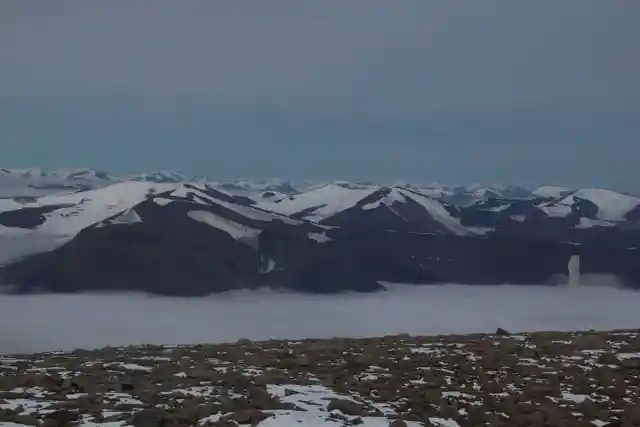
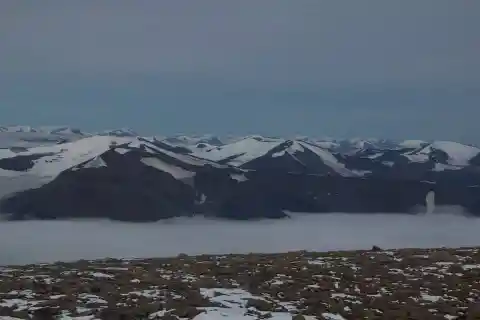
Svalbard was discovered in 1596. Isn’t that impressive? I think so! This fantastic unearthing is attributed to the Dutch explorer Willem Barentsz. Stop for a minute and really think about it, men were already able to get to the Northern Pole, fighting against infallibly monstrous oceans, mighty blizzards, and icy-cold temperatures, more than four centuries ago! Don’t know about you, but that sounds pretty amazing to me. Continue reading for more interesting facts about Svalbard’s history!
#24. A Rising Industry
Before the first residents started to establish in Svalbard in 1630, the archipelago was used for whale and walrus hunting purposes only. When whaling hunting started to provide positive results, a steady, growing industry began to develop, and installations for about 200 workers were built. Later, in the 17th Century, the Russians embarked here, taking full advantage of their hunting proficiency, and feeding on foxes and bears.
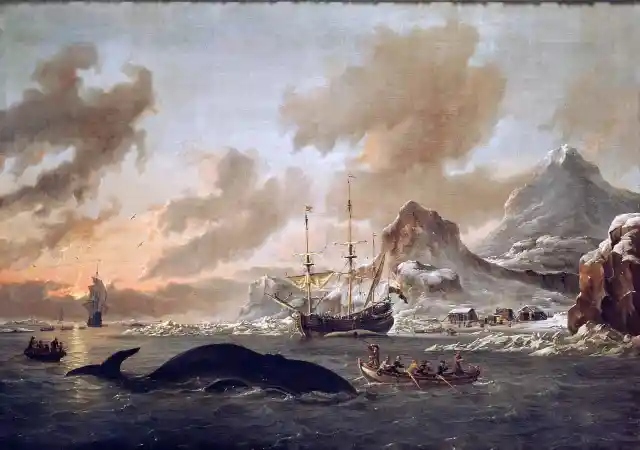
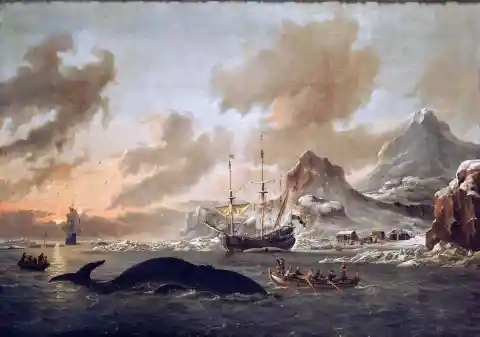
Afterward, during the 17th and 18th centuries, other small bases were built by the French, English and Danish. However, they moved out to other places of the Arctic during the 1820s, with the Russians outstaying them. It seems that none of the people from the other countries adapted to Svalbard’s islands with ease and ability like the Russians. I definitely wouldn’t have liked to be a small mammal and cross paths with an intimidating, skillful, Russian hunter!
#23. War And Scientific Research
However, the dawning of the Anglo-Russian War, in 1809, reduced Russian activity, which was already close to none in 1820. The Norwegians, who had been hunting walruses since the 1790’s approximately, also ceased this activity at the time when the Russians were abandoning the islands. Though the whale and walrus hunting was rapidly disappearing, scientific research started to thrive in Svalbard.
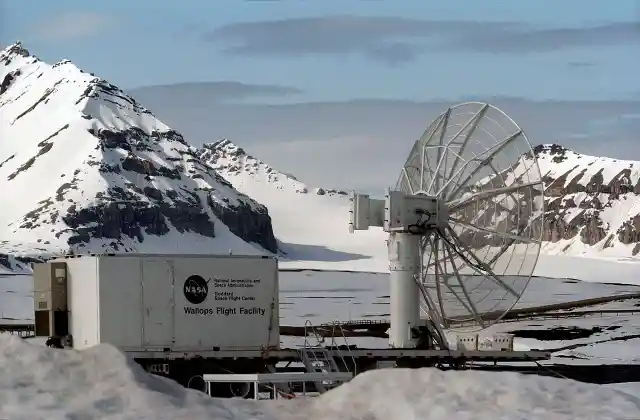
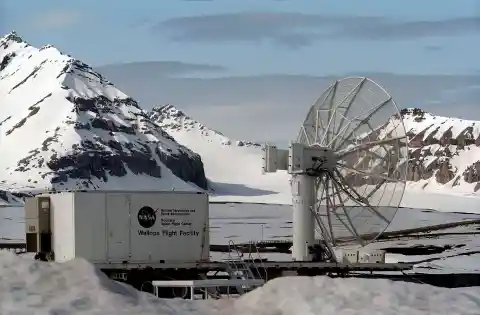
Important scientific expeditions began after the first half of the 19th Century, and this really isn’t a surprise, considering the diversity of flora and fauna in the Arctic region. Still, this wasn’t the only factor, because Svalbard’s distant location made it an ideal place for observing the Earth’s surface. Crucial studies blossomed from these scientific investigations over there, producing important knowledge on geology, currents, glaciers, animals, and plants.
#22. Explorers Pluck Up Courage
Venturous, daring explorers also started to arrive in the northern archipelago during the last years of the 19th century. The most ambitious ones used Svalbard as a resting base, in order to dash towards the Northern Pole afterward. Mining was another new activity that saw notorious growth during this period, with both the English and the Norwegians exploiting this business.
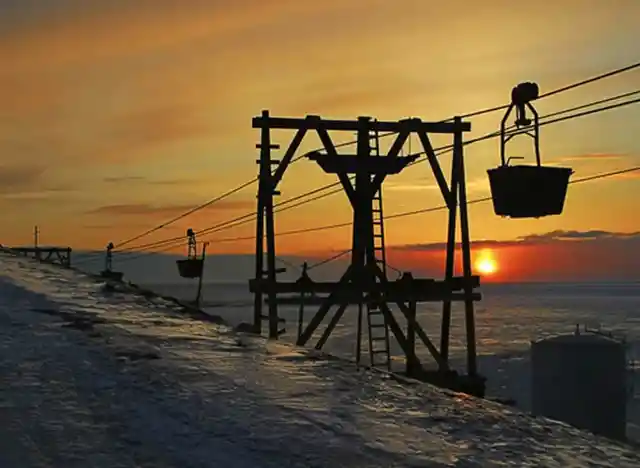
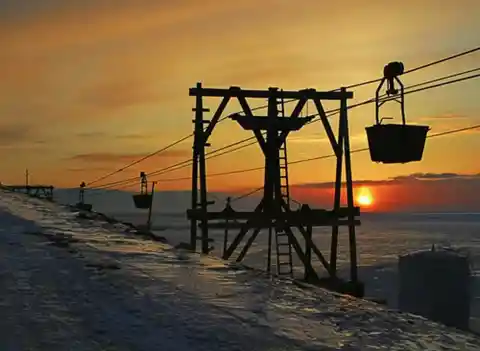
Nonetheless, these isolated, remote places with exotic species and harsh conditions have always been particularly attractive for explorers and audacious tourists in search of an adventure. What’s the magic of the Arctic and the Antarctic for them, exactly? Why do they seem so attractive to these people? Well, it’s probably a combination of numerous factors, but the weather, the infinite, thick layer of snow, the mesmerizing landscapes and the combination of cute and frightening mammals do provide an undeniable fairy tale mystique to these regions.
#21. World War I And Uncertainty
However, though the hunting and mining industries, among others, were growing in Svalbard for decades and decades, it wasn’t really clear who owned it. What’s more, the start of the First World War in 1914 put any attempt of discussing the sovereignty on hold. This debate had begun in the 1910s, but it was obviously halted when one of the deadliest conflicts in human history unleashed.
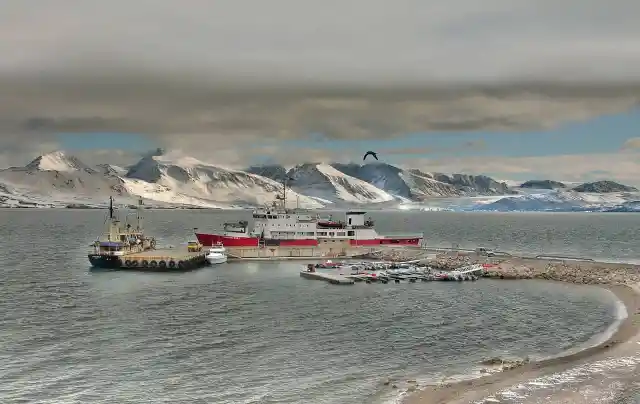
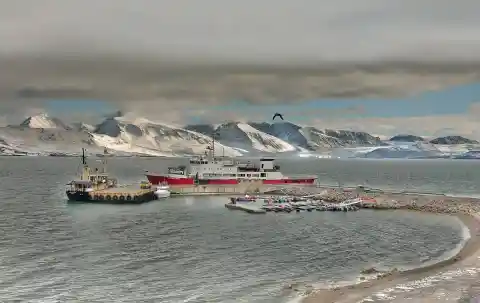
The war ended in 1918 with the victory of the Allies, and Svalbard was officially assigned to Norway in 1920, after the Svalbard Treaty was signed, granting them full power over the islands. The first governor, Johannes Gerckens Bassøe, assumed in August 1925, and Spitsbergen became the main island of the archipelago since then. Everything seemed to be finally settled, but the Second World War brought unexpected chaos. Slide on to see what happened!
#20. Second World War And German Occupation
But, yet again, another World War brought chaos to Svalbard. It was the year 1941 when both Norway and the Soviet Union agreed to evacuate the islands after the Allied forces arrived there. However, a small Norwegian garrison remained on Spitsbergen. This settlement would later be taken by the Germans in 1943, and this was obviously done by force. The outburst of the Second World War had initiated an era of mayhem and confusion like no other in Svalbard!
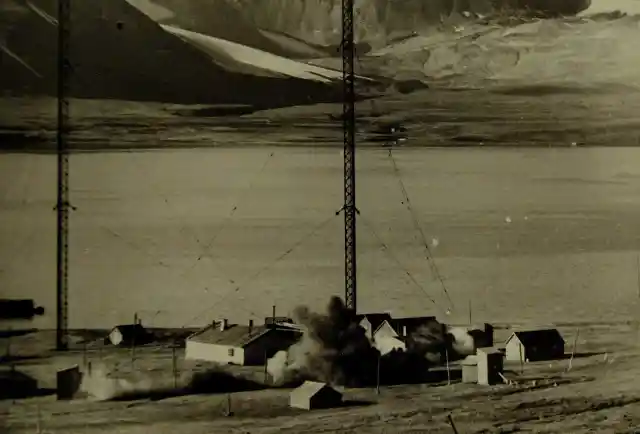
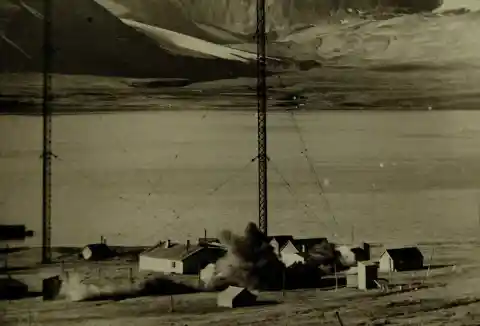
How did it finally come to an end, one might ask… During this time, the Germans organized an operation called Operation Haudegen, which consisted of installing various meteorological stations in Svalbard. The stations were active until 1945, when the last soldiers surrendered and were picked up by a Norwegian seal hunting vessel. At last, the war came to an end in September of that precise year. and peace returned to the Arctic region.
#19. The Aftermath
After the gruesome war came to an end, the Soviet Union and Norway resumed operations calmly. While the Soviets established mining in Grumant, Pyramiden and Barentsburg, the Norwegians re-established operations in Ny-Ålesund and Longyearbyen. Unfortunately, a couple of fatal accidents took place in Ny-Ålesund’s mines. Therefore, it was slowly converted into a research outpost instead. During the second half of the 20th Century, petroleum excavations took place, but the activity was abandoned due to its resonating failure.
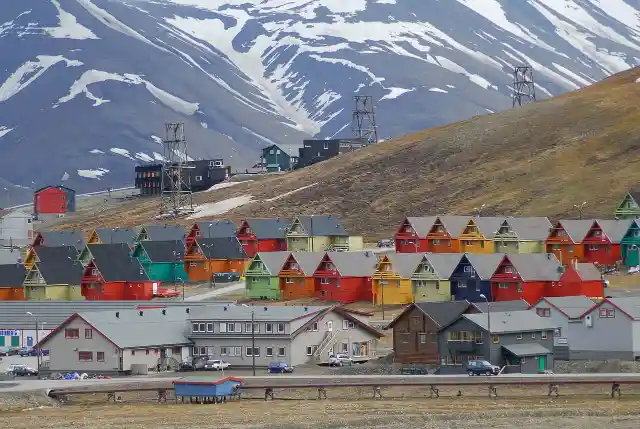
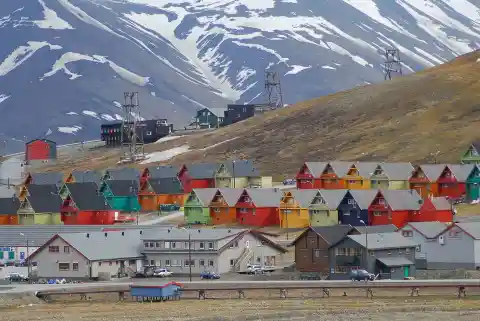
Hence, during these post-war decades, as we arrived at the end of the Century, tourism and research steadily replaced the different industrial activities as Svalbard’s main enterprises. In fact, in 1975, Svalbard’s Longyear airport was opened, permitting year-round flight services. How convenient! Right? If you want to find out more about its current attractions and population, continue to the next slide.
#18. Svalbard, Today
Nowadays, over 2600 people live on the archipelago, with most of the people living in the towns of Spitsbergen and Longyearbyen. What happened with Ny-Ålesund, after those shocking accidents? Well, once a thriving mining camp, it’s now the home of a research community, with scientists from 10 different countries across the globe. Ny-Ålesund is, in fact, the northernmost working settlement on Earth!
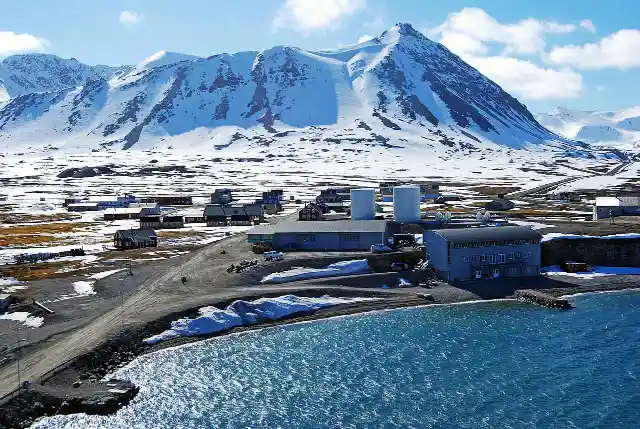
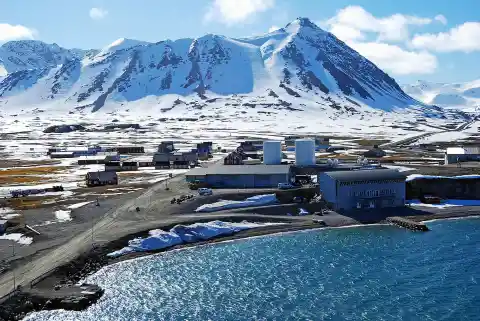
Yep, it’s an only scientist-allowed place today. But, jokes aside, these investigators have the opportunity to take advantage of the peaceful, isolated atmosphere of Ny-Ålesund to carry on relevant research on the wildlife and surrounding areas. Helpfully, they’re finding ways to help save the endangered species before it’s too late. It’s hard to think of a better place to analyze the effects of global warming, that’s beyond any doubt!
#17. But It’s Not Only Researchers
Nevertheless, researchers aren’t the only individuals who are attracted by Svalbard’s magnetism. Tourists and explorers also arrive throughout the year to the Arctic. Yet, only the more adventurous make it to this far-flung group of icy islands. So, when you think about it, it’s not much of a surprise that out of the Arctic’s million tourists of every year, just about 70 thousand make it to Svalbard. Yes, less than 1/10! Didn’t see that coming, did you?
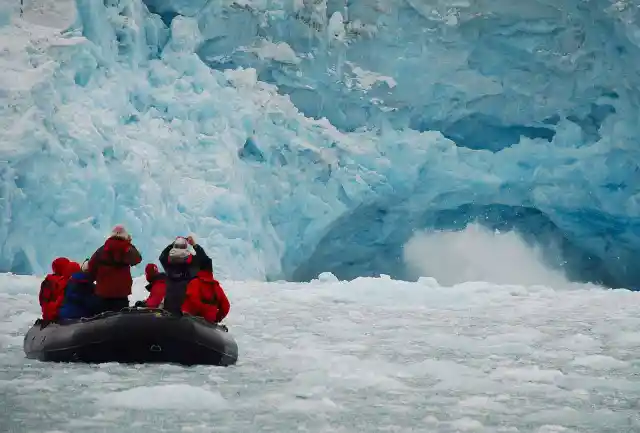
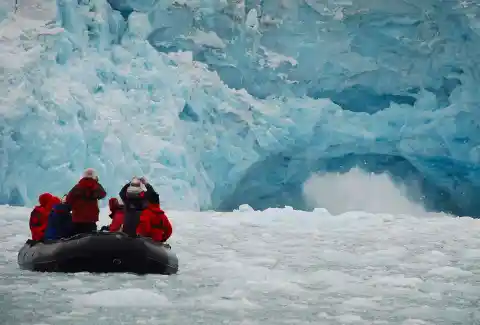
A trip to Svalbard is one hell of a story to tell to anyone, though, that’s for sure! Just picture it, your buddies are reuniting after the holidays, and you appear with your polar bear’s astonishing pictures, they’d be mind blown in a second! Well, the young group of explorers that found the mysterious object had a little more than that to show off… Keep sliding through to see their discovery unveiled!
#16. Stunning Sites
Even though it’s highly unlikely to casually run into such an amazing thing like the young group of explorers did, if you do travel to Svalbard, a whole bunch of bewildering landscapes and panoramas are definitely guaranteed. Even the most sedentary, nature-hater member of your family will be thrilled by the stunning glaciers. And if that’s not the case, then the northern lights will definitely do it.
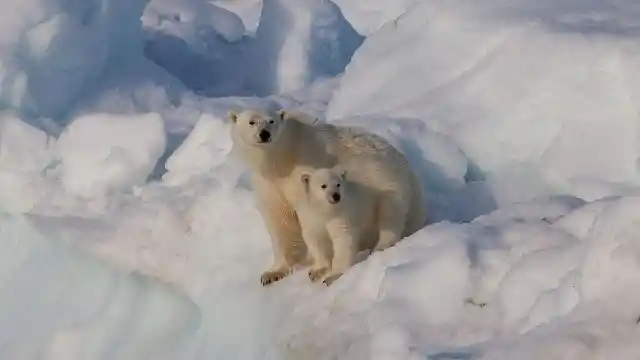
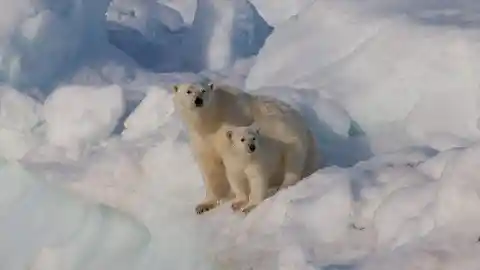
These usually take place in October, when there’s less sunlight as each day passes. As this dark season begins to predominate, there comes a time when the only natural light is provided by the moon, the stars, and the aurora borealis, or Northern Lights. Merely a clear day or night is needed to witness a captivating phenomenon that’ll make you truly feel in a magical fairy-tale land. Sounds tempting, right? Now those courageous tourists that make it to Svalbard don’t seem so out of their minds, do they?
#15. A Photographer’s Paradise
Therefore, it’s no surprise that the Arctic is a favorite for professional and amateur photographers, looking for pictures of their lifetime. Although global warming is taking its toll already, the Arctic is one of the planet’s only wildernesses practically unharmed by human technology or large factories and cities. Here’s a fact that clearly depicts this characteristic: Svalbard also consists of seven national parks!
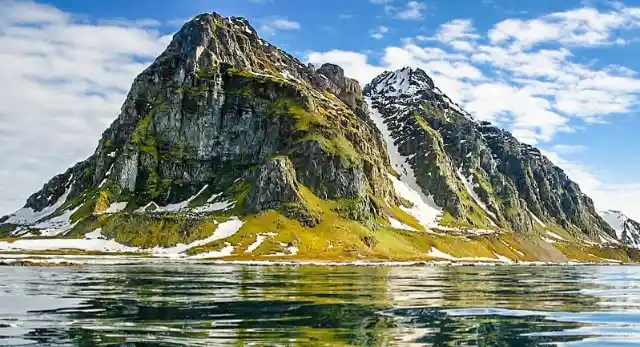
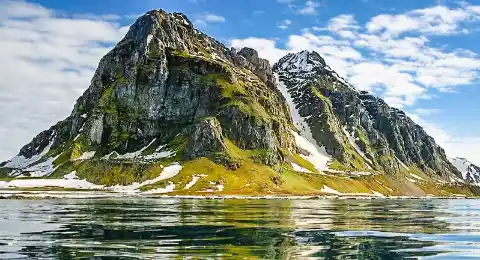
What’s more, 23 nature reserves can be found here. The reserves, together with the mentioned national parks, constitute two-thirds of the archipelago. This outstanding environmental paradise was where a young Flickr user with his group of friends was arriving on July 9, 2010… But what happened when they were gently navigating these freezing waters with their raft? Check it out in the following slides!
#14. Not A Mere Beginner
This photographer, known on Flickr as “buen viaje”, which translated from Spanish means “good trip”, wasn’t facing his first heroic voyage, apparently. According to his account, he had already embarked on numerous arduous trips with his camera. It’s not unexpected that his most prolific shots are proudly displayed on his social media accounts, attracting the attention of users from all over the world. As we could observe, North America’s Inside Passage had been his destination once, in 2009.
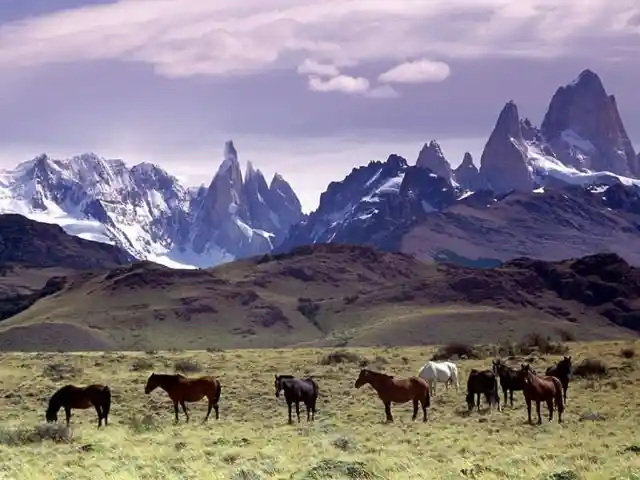
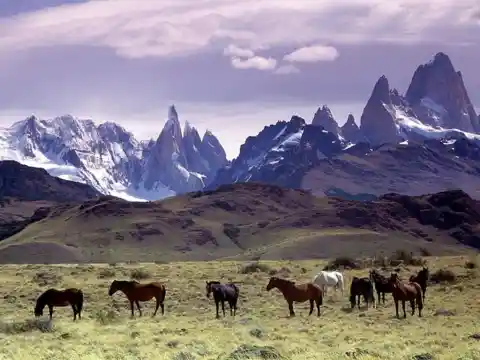
The Inside Passage is actually a pretty challenging place already. It’s basically a coastal route for boats and ships that extends from the southeast of Alaska to northwestern Washington. Some of the most isolated communities can be visited along the network of passages. Sounds like a great warm-up for an expedition to the Arctic for me, doesn’t it? Moreover, “Buen Viaje” had already been to other remote locations, such as beautiful Patagonia, and even the Antarctic content. But the trip to Svalbard would turn out to be the one that would help him obtain worldwide recognition…
#13. Photographing The Wildlife
In 2010, the photographer and explorer decided to set out on his wildest adventure yet. Yes, his goal was the mysterious, remote archipelago of Svalbard. So, he kicked off his epic trip to the northernmost populated islands, home of mighty whales and tender hares, a territory of darkness (literally) and jarring temperatures. Fortunately, when appreciating his pictures, it definitely looks like his quest was worth the trouble.
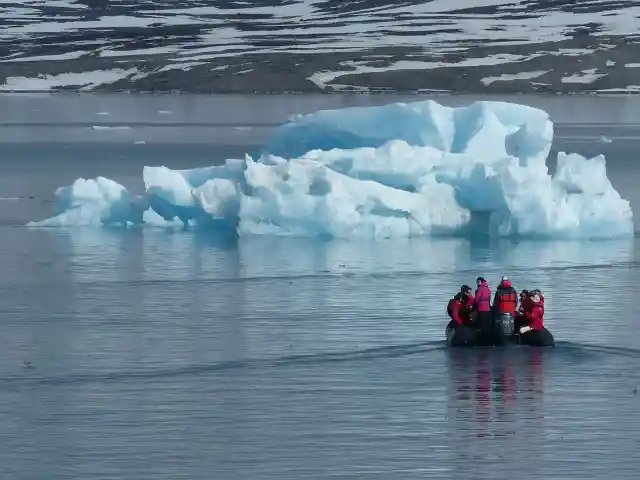
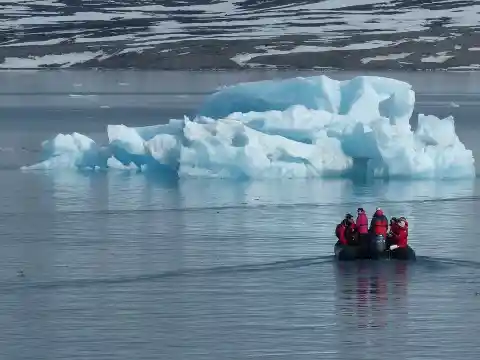
The Flickr user didn’t waste the unique opportunity of capturing the Arctic’s grace through his lens. He snapped some gorgeous pictures, such as some that show walruses displaying their tusks, or ice-breaking before a ship’s prow. However, when he was approaching Svalbard, an unusual object was spotted, floating close to the surface. His eyes couldn’t believe it, a gigantic skeleton! What was it, exactly? Though he was probably puzzled at the sight of this, he was certain of one thing: The picture of his life had been achieved. Check it out in the next slide!
#12. A Colossal Skeleton
Gargantuan vertebrae resting at the surface of the crystalline water. What a sight! Don’t know about you, but I’d be terrified. Besides, what could it be? Put yourselves in the shoes of the explorer. You’re finally reaching the shore of Svalbard, after a rough journey, when you realize that the raft is navigating over a massive skeleton. What if it is a unique geological discovery? Could it have belonged to a dinosaur? A terrific sea monster? Or are they the remains of a random, common swimming creature?
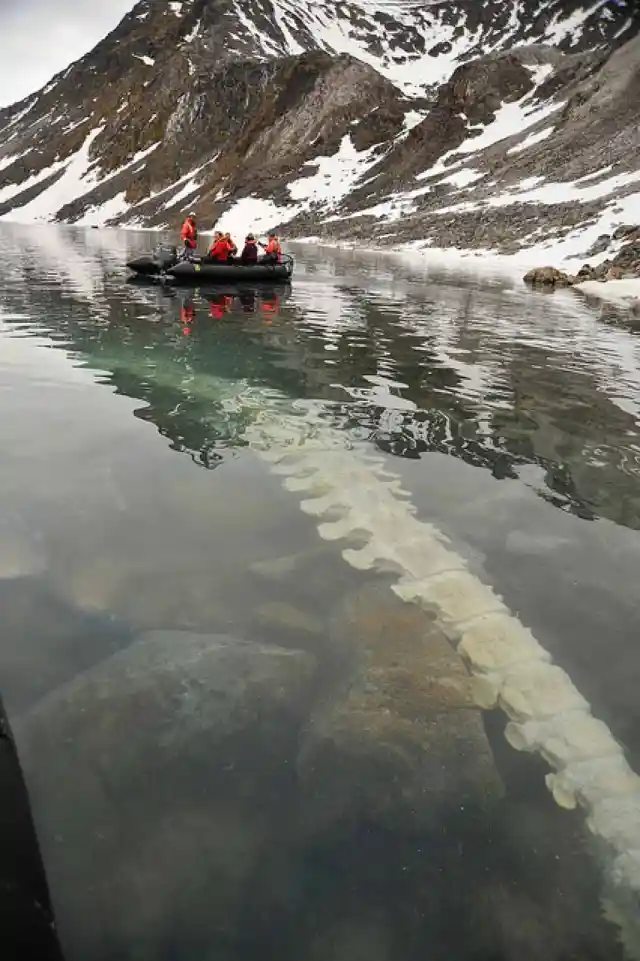
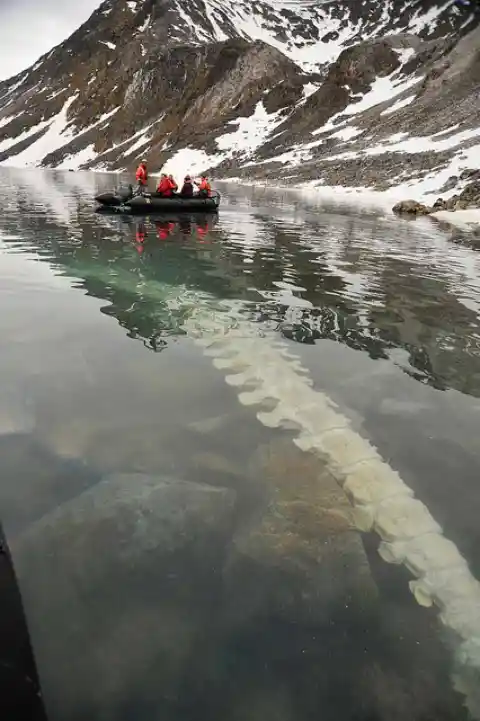
Well, sorry to disappoint you if you were expecting a dinosaur, but according to the picture’s caption on social media, those were the remains of a whale, apparently. According to the photographer, the carcass had been providing a source of food for the polar bears from Svalbard for over a year. No hunting for 12 months, I bet those bears were joyful! Although they turned out to be the bones of a whale, the picture is stunning, nevertheless, and it did spark some wild theories. The achievement did raise Buen Viaje‘s ego a lot, though, since he formulated a controversial prediction…
#11. A Prediction That Has Yet To Come True
When the picture started to gain attention on the Internet, the photographer made a risky assertion, stating that the next BBC documentary about polar bears would show footage from that spot. However, much to his disappointment, this hasn’t occurred to this day. The photo did grab quite a lot of attention on social media, though, and deservedly so, it’s definitely a shocking scene. It is true that nowadays practically anything can go viral on Twitter or Facebook, but the panorama shown in the picture is quite astonishing.
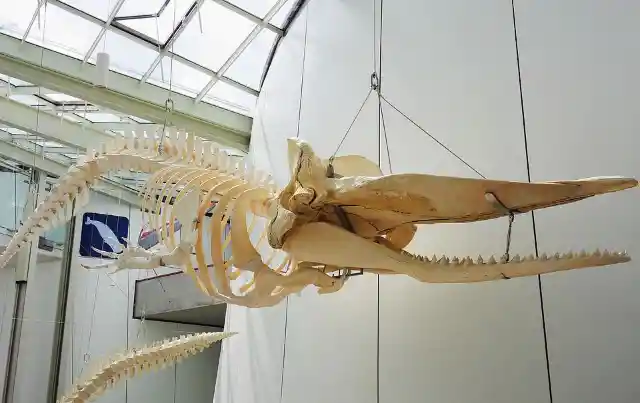
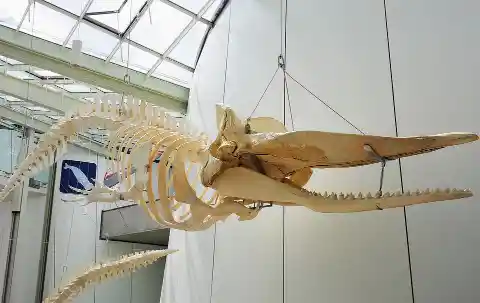
Furthermore, there might be other reasons that explain its rising popularity, apart from its bewildering content. In fact, it is very rare for this type of specimen to be found almost unharmed and intact. Because it wasn’t just a couple of bones, the whole vertebrae were there! Seemingly, only six whale skeletons have been fully located since records began, according to the National Oceanography Center. Quite a remarkable discovery, huh? I think so! Up next, find out the reason!
#10. Why Does This Happen?
It’s extremely unusual to find intact remains of whales, and according to scientists, the reasons are quite simple. When whales die, they sink to the unnerving sea bottom. But before that, decay already begins quickly, while the inside is decomposing. Immediately after, the animal is expanded with gas, and if it floats for a while at the surface, it’s devoured by sharks and aggressive birds. Sooner or later, the gigantic mammal will fall until it hits the dark, mysterious bottom.
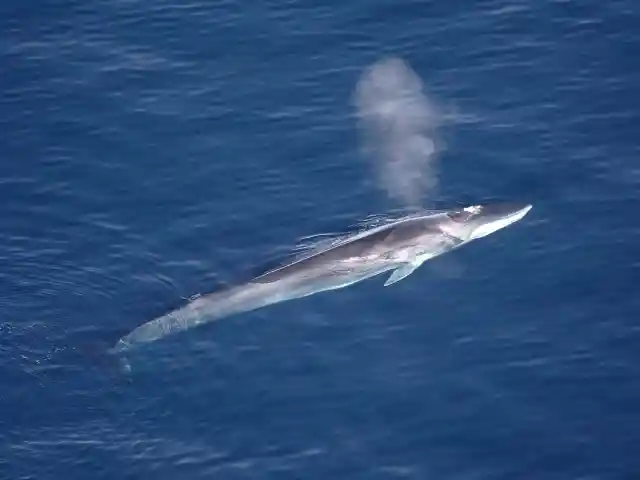
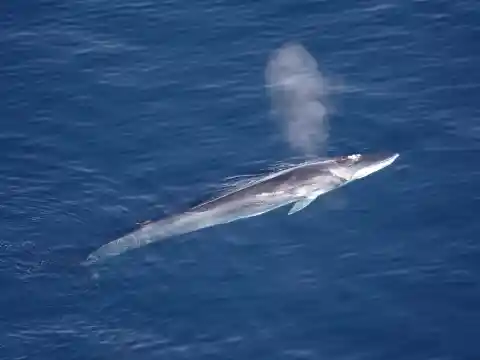
Here, the appearance of such an animal can feed a whole ecosystem of deep-sea creatures. The creatures that can take advantage of this range from microscopic bacteria to large scavengers. Meanwhile, other larger and more familiar species may begin to tear the muscles and blubber, straight to the bone, including lobsters and crabs. The process doesn’t here, though! For how long can these scavenging animals feed on the fallen whale exactly? Head straight to the next slide to learn this amazing fact!
#9. Surviving The Process
Many people may think that the decomposition process carried out by bacteria and other scavengers may take a couple of minutes to several hours. But little do they know that one dead whale can feed an enormous amount of animals for about 2 years! The carcass may already be reduced to a mere pile of bones, but the process that has been described is just an initial phase, though. Shrimp, bristle worms and sea snails usually continue, finishing any muscle or blubber leftovers. Still, there are a crucial species that haven’t been named yet.


This is the zombie worm, also called bone worm. They sound pretty disgusting, don’t they? The bone worms literally eat the bones of the whale, and they’re the most essential animal in this part of the decomposition. These deadly scavengers, among other bacteria as well, may spend up to 10 years finishing off the last remains. That’s why finding an intact dead whale is so unlikely, and so astonishing too, for scientists. So, what type of whale did “Buen Viaje” stumble across, exactly? Find out on the next slide!
#8. Getting Acquainted With The Fin Whale
Allegedly, the bones belonged to a fin whale, and this is not any common animal. These are one of the largest mammals on this planet. Wondering what’s their maximum size? Well, if you’re curious, they can grow up to 89.6 feet long (27.3 meters). In fact, they’re the second-largest animal on Earth, only second to the blue whale. However, that’s not even their most impressive feature. The fin whale’s most odd and surprising characteristic is that even though they’re really heavy (around 74 tonnes), they’re quite a fast swimmer too!
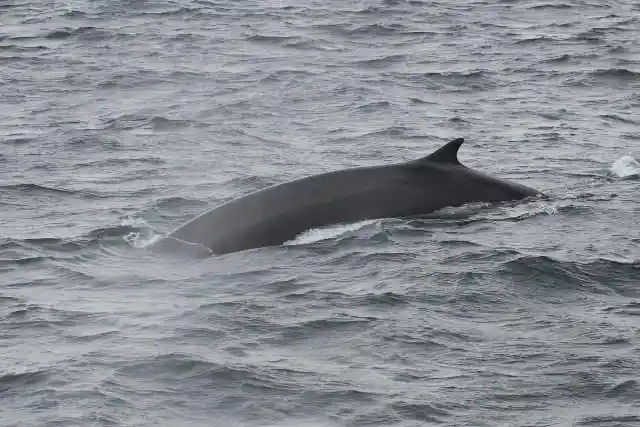
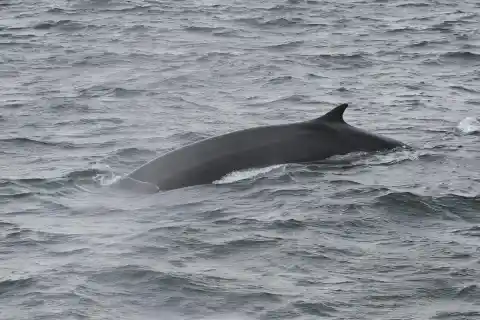
Indeed, their huge weight doesn’t seem to be a hindrance at all, since fin whales can reach speeds of 30 miles per hour, approximately. Amazing, isn’t it? This constitutes an obvious advantage for them when escaping ferocious predators. And when I say ferocious predators, I’m not only talking about sharks but humans as well. It is firmly believed that this is the key factor that explains how they survived the insatiable whale hunting of the 19th and 20th centuries since they could usually out swim ships. Still, this is currently an endangered species, sadly. If you want to learn some facts about how this took place, continue to the next slide.
#7. How Did They Become Endangered?
One may ask, how did the fin whale turn out to be an endangered species when they’re such a fast, powerful animal? Well, unfortunately, humans have proved to be fearless and insatiable hunter throughout the centuries. In fact, as a direct consequence of commercial whaling, about 750 thousand fin whales disappeared from the Southern Hemisphere between 1904 and 1979. Yes, only 75 years were necessary for that! It’s incredible when you come to think about it really.
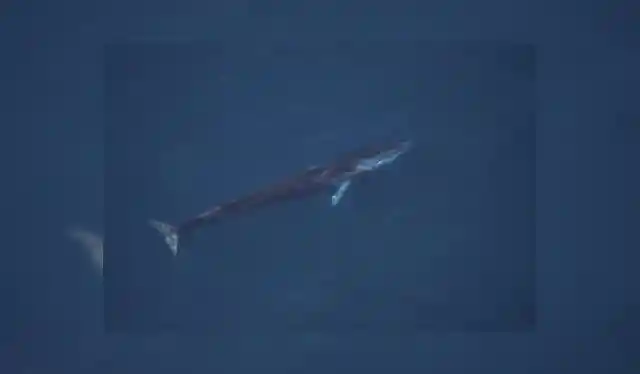
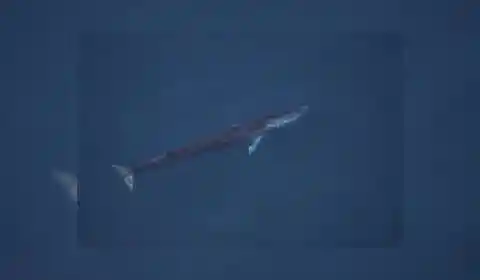
So, despite the fact that whale hunting isn’t as big a threat for them as it has been in the past, they are, bitterly enough, still endangered to this day. One might ask oneself what’s the current population, after all those years of unstoppable hunting. Well, to answer your doubt, scientists guess that 100 thousand of these creatures remain. Let’s all hope that they will multiply and thrive again in the oceans!
#6. Fin Whales Today
If you’re wondering if you’ll ever have the chance of catching the sight of one of these beautiful animals, we’ve got good news for you! The fin whales can be found on every major ocean of the world. They are only absent from the Red Sea and other small areas of water far away from the oceans. These sea creatures are better adapted to cool, temperate waters, and you would have to be pretty lucky to spot one in the Southern Hemisphere since they’re still scarce over there.
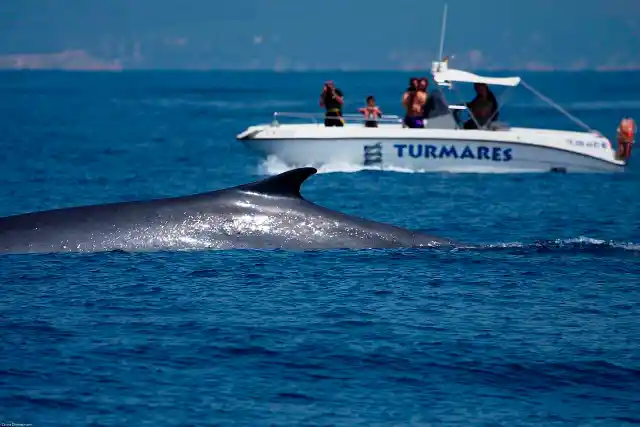
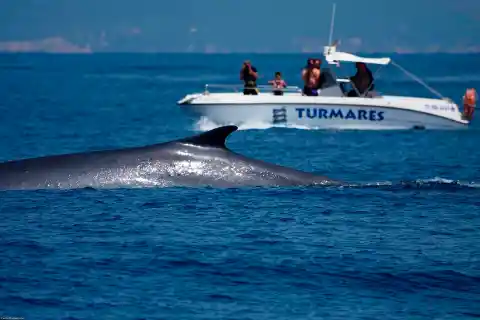
Logically, since they prefer cold waters, the warmest zones of the equatorial regions aren’t particularly inhabited by them. However, these animals do tend to migrate from season to season. Not unlike other whales, they tend to emit long, low-frequency sounds (yes, just like the ones Dory makes on Nemo!). But this specific species produce the sounds with the lowest frequency of the animal kingdom. Quite outstanding, isn’t it?
#5. Protect Them At All Cost!
These unique specimens are currently protected by numerous organizations that look out for their safety. The International Union for Conservation of Nature has categorized them as an endangered species, so they do their best and take specific measures to safeguard their habitats. Still, this is by no means an easy task, since Iceland and Japan have resumed whale hunting. It’s really a shame, considering that some notorious progress had been made over the last 20 years.
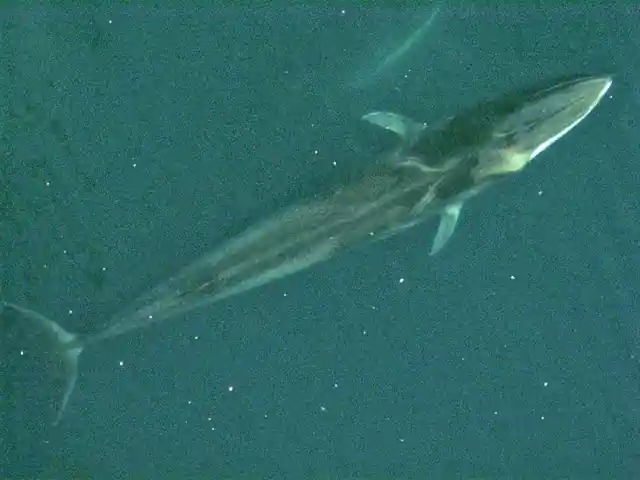
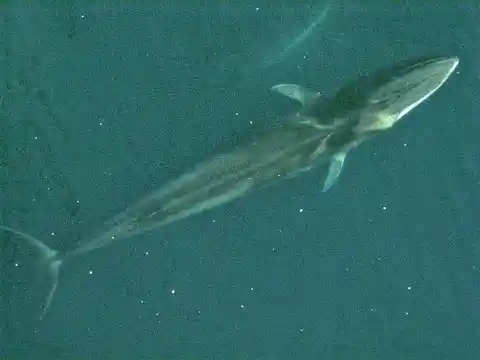
It’s impossible to know for sure if it will be enough to save the fin whales. Other organizations such as the Atmospheric Administration and National Oceanic strive for their preservation, promoting legislation that diminishes commercial hunting and studying the animals closely as well. Moreover, it may not have the same direct effect as hunting, but global warming also jeopardizes the whale’s lives (remember that fin whales adapt better to cool waters).
#4. Commercial Whaling Continues
While at first, during the 19th Century, fin could easily escape from human ships, a crucial technological improvement changed the odds. Wondering what was the key factor that altered the relationship between hunters and whales? The answer is the steam-powered boats and the explosive harpoons. These exploded upon impact, enabling the whaling industry to quickly rise. Specifically, the 20th Century proved to be fatal, the numbers speak for themselves: about 1 million whales were killed by men in the Antarctic.
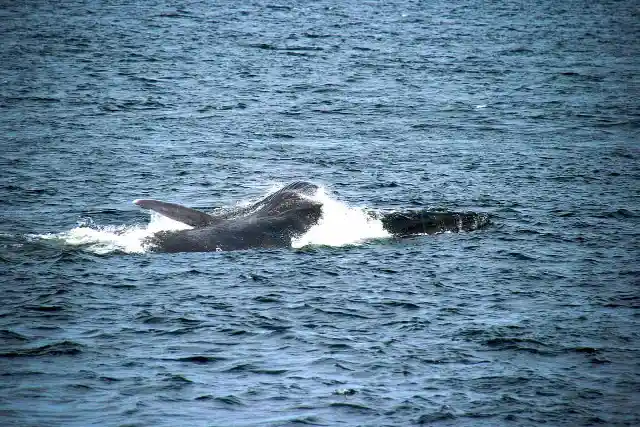
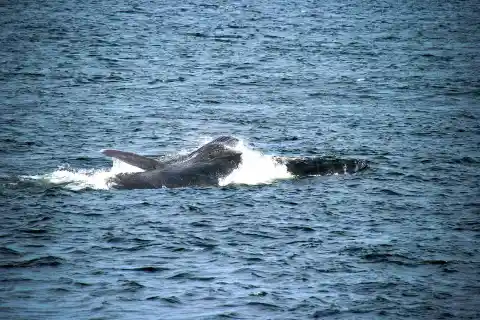
Fortunately, though, during the last couple of decades, some organizations and public figures started to raise awareness after noticing that humans can’t continue to act with such reckless greed if severe damage to our planet is to be avoided. For instance, the International Whale Commission prohibited hunting in the Southern Hemisphere in 1976. Still, Iceland and Japan keep increasing the whale quota that they intend to catch each year, and illegal whaling is a preoccupying reality to this day. Thus, this makes Buen Viaje‘s finding even more uncommon, it was definitely a rarity. Check the wildest hypotheses that his discovery sparked on the next slide!
#3. Speculation Resurfaces
Indeed, when considering the actual scarcity of fin whales and the multiple scavenger’s infallibilities when decomposing the remains, the intact skeleton that appeared near Svalbard in 2010 was an impressive wonder. Therefore, it’s not much of a surprise that the famous picture usually goes viral again and again on social media, precipitating an immense wave of retweets, likes, and comments of all types!


In fact, that was exactly what happened in 2013, when the famous picture resurfaced on Reddit. The post that once again attracted attention to the photograph was titled “what the hell was this thing?”. Most of the users were already familiar with the story, affirming that the bones showed the remains of a fin whale. Yet, that didn’t stop the wildest theories! The craziest users swore that the vertebrae were too massive and they speculated about the following legendary creatures…
#2. The Ferocious Megalodon
One of the most insane theories suggested that the bones actually belonged to the extinct Megalodon, probably the most dangerous creature to ever roam the oceans. The Megalodon —or Carcharocles megalodon (meaning “big tooth”)—inhabited all the major oceans, and it was so enormous and powerful that it actually fed on whales, among other animals. Want to know some scary facts about this mighty predator?
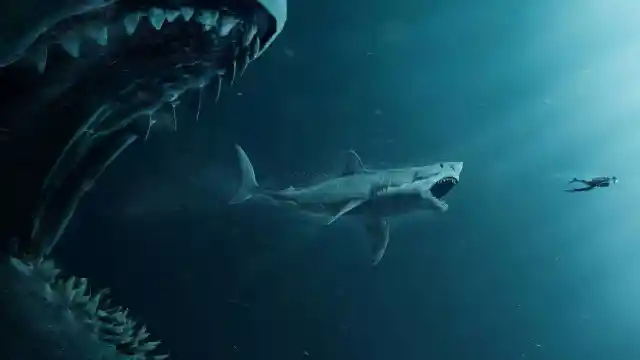
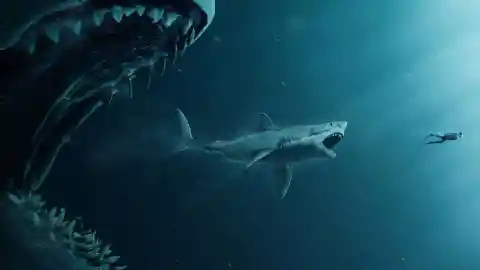
A megalodon could reach a length of 59 feet (18 meters)! What we know today as the great white shark is just a cute, small killer compared to it. Their bite was so vigorous that it could literally crush their prey’s bones into pieces. So why could they become extinct if they were feared by every species? Scientists are not sure, but the likeliest factors could’ve been a strong competition with other whale-eating cetaceans (like the legendary Livyatan) and food shortage. But this theory’s got nothing on the next one!
#1. The Loch Ness Monster
As a joke, some users even suggested that the skeleton belonged to a relative of the loch ness monster. The loch ness monster is a mythological creature that’s said to inhabit the Scottish Highlands. Though many people swear that they’ve really spotted one, and even mysterious pictures have surfaced, the scientific community disregard these as mere hoaxes, affirming that there’s no biological basis to support the theory.
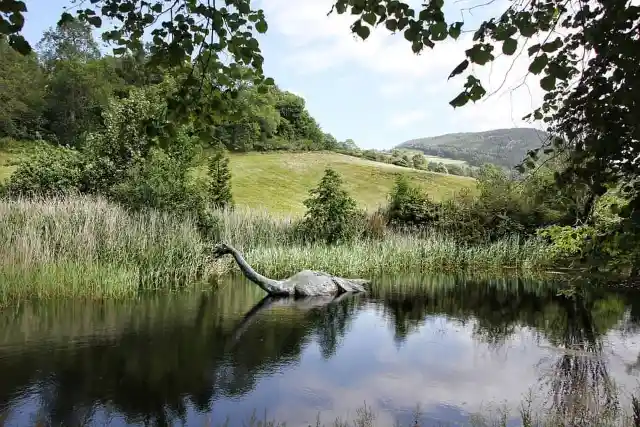
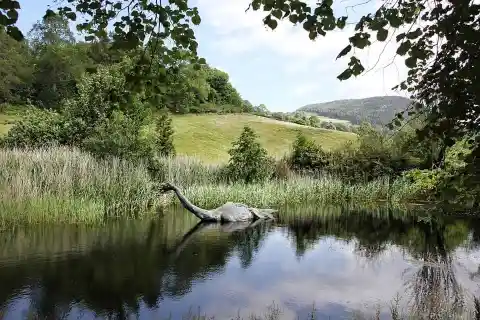
Therefore, after reading those mad speculations, some users were obviously a bit disappointed to learn that Buen Viaje had actually run into a fin whale’s skeleton. This doesn’t diminish the stunning photograph’s value, though, since it still shows a shocking panorama. In fact, as far as anyone knows, those sinister remains are still concealed in the Arctic Ocean… Will they ever be found again? I hope so!